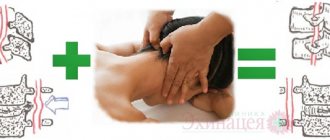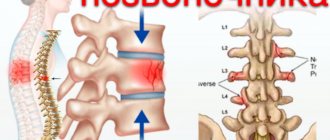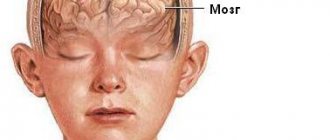What is an intracerebral hematoma
An intracerebral hematoma is a limited spherical accumulation of liquid blood in the brain tissue, as well as its clots, resulting from the rupture of a blood vessel with the subsequent formation of a hematoma in the brain tissue. In cases of trauma, the hematoma may also have inclusions of cerebral detritus (elements of brain matter and bone tissue that have entered the wound of foreign bodies).
Typically, the growth of an intracerebral hematoma is observed during the first two to three hours that have passed since the onset of hemorrhage (the time may increase if there are blood clotting disorders). Typically, hematomas of this type are often localized in the frontal and temporal lobes of the brain, much less often in the parietal lobes. At the same time, intracerebral hematomas of traumatic origin are often fixed closer to the surface of the brain, and those associated with pathology of vascular origin are in its depth.
Intracranial hematomas
Intracranial hematomas (epidural, subdural, intracerebral, intraventricular) are the most common cause of brain compression in TBI, followed by crush lesions, depressed fractures, subdural hygromas, and rarely pneumocephalus.
Epidural hematomas
occur in 0.5-0.8% of all TBI and are characterized by the accumulation of blood between the inner surface of the skull bones and the dura mater. The most “favorite” localization of epidural hematomas is the temporal and adjacent areas. Its development occurs at the site of application of a traumatic agent (a blow with a stick, a bottle, a stone, or a fall on a stationary object), when the vessels of the dura mater are injured by bone fragments. Most often, the middle meningeal artery and its branches are affected, less often - veins and sinuses. Rupture of the vessel wall leads to rapid local accumulation of blood (usually 80 to 150 ml) in the epidural space. Considering the presence of fusion of the dura mater, especially in places of cranial sutures, the epidural hematoma has a lens-shaped shape with a maximum thickness of up to 4 cm in the center. This leads to local compression of the brain, and then to a clear clinical picture of hypertensive-dislocation syndrome. Quite often, patients with epidural hematomas experience a clear period when, after a short-term loss of consciousness after an injury, it fully recovers for a period of several tens of minutes to several hours. At this time, only moderate headache, weakness, and dizziness are noted. After this, the patient's condition sharply and progressively worsens. Episodes of psychomotor agitation, repeated vomiting, and unbearable headache are often observed, after which secondary depression of consciousness occurs from stupor to coma. It should be noted that patients with an epidural hematoma are characterized by the rapid development of cerebral compression syndrome and a coma can occur within a few tens of minutes after the victim’s relatively good condition. At the same time, bradycardia increases to 40-50 beats per minute, arterial hypertension, focal symptoms deepen, oculomotor disorders and anisocoria appear. Craniograms reveal cracks and fractures of the temporal bone (and the fracture line intersects with the groove from the middle meningeal artery, sometimes with the projection of the sagittal and transverse sinuses - in case of fractures of the occipital, parietal and frontal bones). With echoes, there is a clear lateral displacement of the midline structures, usually up to 10 mm. CT examination data (if the severity of the patient’s condition allows for examination) indicate the presence of a lens-shaped hyperdense zone, adjacent to the bone and pushing aside the dura mater.
When a diagnosis of epidural hematoma is made, emergency surgical intervention is indicated. It should be noted that in patients with a clinical picture of rapidly growing hypertensive-dislocation syndrome, surgery should be performed as soon as possible, before the development of severe post-dislocation circulatory disorders in the brain stem. During anesthesia, it is impossible to correct arterial hypertension with medication until the hematoma is removed, since this increase in blood pressure is a compensatory protective mechanism of the brain from ischemia in conditions of intracranial hypertension and cerebral compression syndrome. In such cases, a decrease in systemic blood pressure to “normal” will lead to worsening hypoxia and ischemia of brain tissue, especially in the brain stem regions. Currently, preference is given to the osteoplastic version of craniotomy, however, in cases of comminuted fracture, bone resection is performed to form a trepanation window (usually 6 to 10 cm in diameter), sufficient for adequate removal of the hematoma and search for the source of bleeding. It must be remembered that identifying the source of bleeding that caused the formation of a hematoma significantly reduces the risk of repeated hematomas in the surgical area. After removing blood clots and the liquid part, thorough hemostasis is carried out using coagulation, hydrogen peroxide, and a hemostatic sponge. Sometimes it is necessary to sut the dura mater to the periosteum along the edges of the trepanation window. With a verified isolated epidural hematoma, there is no need to open the dura mater. The bone flap is placed in place and fixed with periosteal sutures, leaving epidural drainage for 1-2 days. In cases of emergency craniotomy due to the severity of the patient’s condition, after removal of the epidural hematoma, a linear incision of the dura mater 2-3 cm long is made and a revision of the subdural space is made in order to identify accompanying hematomas and foci of crush injury to the brain. With timely and adequate surgical intervention in the postoperative period, patients experience rapid regression of general cerebral, focal and dislocation symptoms. When operating on victims with acute epidural hematoma against the background of severe dislocation syndrome, the outcomes are much worse and mortality reaches 40% due to irreversible ischemic post-dislocation changes in the brain stem. Thus, there is a clear relationship between the results of treatment of patients with epidural hematomas and the timing of surgical intervention. Subacute and chronic epidural hematomas are quite rare, when the clear interval lasts several days or more. In such patients, hypertensive-dislocation syndrome develops slowly and has an undulating course (improvement of condition against the background of moderate dehydration). In these cases, it is almost always possible to conduct a full neurosurgical examination, including CT, MRI, angiography, the data of which make it possible to clearly determine the location and size of the hematoma. These victims are also indicated for surgical treatment - osteoplastic craniotomy, removal of epidural hematoma. Sometimes spontaneous drainage of an epidural hematoma through the fissure area into the subgaleal space is possible. For small isolated epidural hematomas, no more than 40 ml in volume, which do not cause cerebral compression syndrome, you can refrain from surgical treatment in the conditions of a dynamic CT study. In 3-4 weeks. During drug treatment, the hematoma resolves.
Subdural hematomas
are the most common form of intracranial hematomas and account for 0.4 to 2% of all TBIs. Subdural hematomas are located between the dura mater and the arachnoid mater. The sources of bleeding in these cases are the pial veins at the point of their confluence with the sinuses and damaged superficial vessels of the hemispheres. Approximately the same frequency of hematoma formation both in the area of application of the traumatic agent and in the type of counter-impact often determines the development of bilateral hematomas. Unlike epidurals, subdural hematomas, as a rule, spread freely throughout the subdural space and have a larger area. In most cases, the volume of subdural hematomas ranges from 80 to 200 ml (sometimes reaching 250-300 ml). The classic variant of the course with the presence of a light gap is extremely rare due to significant damage to the brain substance compared to the clinical course of epidural hematomas. In acute subdural hematoma, the picture of hypertensive-dislocation syndrome develops within up to 2 days. Depression of consciousness to the point of stupor-coma is observed, hemiparesis increases, bilateral pathological foot signs, epileptic seizures, anisocoria, bradycardia, arterial hypertension, and respiratory disorders appear. In the absence of treatment, hormetonia, decerebrate rigidity, bilateral mydriasis, and lack of spontaneous breathing later develop. Craniograms do not always show damage to the bones of the vault and base of the skull. EchoES data are positive only for laterally located isolated subdural hematomas. A CT scan reveals a crescent-shaped hyperdense zone, usually extending over two or three lobes of the brain, compressing the ventricular system, primarily the lateral ventricle of the same hemisphere.
It should be noted that the absence of a hyperdense zone according to CT data does not always exclude the presence of a subdural hematoma, since during its evolution there is a phase of isodense hematoma with brain tissue and the presence of a hematoma can be judged indirectly by the displacement of the ventricular system or by conducting an MRI study. Patients with verified subdural hematomas require emergency surgical treatment - osteoplastic craniotomy, hematoma removal, and brain revision. After lifting the bone flap, a bluish, tense dura mater that does not transmit brain pulsations is revealed. It is advisable to make a horseshoe-shaped incision of the latter, with the base towards the sagittal sinus, which will provide adequate access and reduce the likelihood of developing a gross cicatricial adhesive process in the trepanation area in the postoperative and long-term periods. After identifying a hematoma, they begin to remove it by washing away the clots and careful aspiration. If the source of hematoma formation is identified, then it is coagulated and a small fragment of a hemostatic sponge is placed. A thorough hemostasis and inspection of the brain is performed, especially the pole-basal sections of the frontal and temporal lobes (the most common site of development of crush lesions). Usually, in isolated subdural hematomas, in cases of timely surgical intervention before the development of pronounced hypertensive-dislocation syndrome, after removal of clots, the appearance of a distinct pulsation of the brain and its straightening are noted, which is a good prognostic sign. In hospitals where there are no special neuro-resuscitation departments and where there is no possibility of conducting a dynamic CT study, removal of a bone flap is indicated, followed by its preservation in a formaldehyde solution or implantation into the subcutaneous tissue of the abdomen or the anterolateral surface of the thigh. This is done in order to reduce the negative impact of postoperative reactive edema of the cerebral hemisphere. Under any conditions, the bone flap is removed in cases where concomitant foci of crush injuries, intracerebral hematomas are detected, hemispheric edema persists after removal of the subdural hematoma and its bulging into the trepanation defect. These patients are also advised to apply external ventricular drainage according to Arendt for a period of up to 5-7 days.
Reasons for the formation of intracerebral hematoma
The main reasons causing hemorrhage into the brain tissue and the formation of intracranial hematoma can be considered:
- traumatic brain injuries
- sharp increase in intravascular pressure
- rupture of cerebral aneurysm
- the presence of brain tumors that provoke arrosive bleeding
- pathology of vascular development (arteriovenous malformation)
- impaired elasticity of vascular walls (caused by atherosclerosis, diabetes, systemic vasculitis)
- the presence of diseases of the circulatory system associated with changes in blood viscosity and fluidity
- taking anticoagulants
What are the symptoms of intracerebral hematoma formation?
Typically, the first symptoms begin to appear from the onset of hemorrhage, although their intensity directly depends on the severity of the lesion. Sometimes, from the moment the hematoma forms until characteristic symptoms are observed, a time may pass (from several hours to months), called the “light interval.” It is customary to distinguish symptoms:
1. cerebral – manifests itself:
- headache of sufficient intensity
- dizzy
- nausea, vomiting
- general weakness and drowsiness
- confused consciousness (sometimes preceded by psychomotor agitation), with a possible transition to coma (as with hemorrhage in the ventricles of the brain)
2. focal – correlated with the volume and localization of the hematoma, manifests itself:
- speech disorders
- difficulty swallowing
- hearing disorders (hard of hearing) and vision (nystagmus, drooping upper eyelid)
- behavior disorder
- loss of sensation in the limbs
- epilepsy attacks
- memory loss
- increased temperature (when blood enters the ventricles of the brain)
Types and symptoms of cerebral hematoma
A cerebral hematoma is a hemorrhage in the brain tissue, resulting in the formation of a cavity filled with blood. The main sign of hematoma formation is intense headache, which can sometimes provoke nausea and constant vomiting.
Symptoms of hematoma:
- Dizziness.
- Severe drowsiness.
- Foggy consciousness.
- The occurrence of problems with coordination of movements.
- Distortion of gait.
- Speech disorders of varying severity.
- Significant difference in pupil sizes from each other.
- A sudden onset of weakness in the limbs of one or another half of the body.
Elderly people and infants deserve special attention, since they may develop a hematoma even as a result of minor blows to the head.
A brain hematoma is a dangerous injury because it leads to defects in the nervous tissue, impaired blood circulation in it, compression of the brain and an increase in intracranial pressure. Therefore, it is very important to quickly seek medical help, otherwise a lot of blood may accumulate in the brain, which will lead to displacement of the cranial structures relative to each other. The result will be a deterioration in the person’s condition, the development of seizures (even 2 years after the injury), lethargy, coma and death.
The severity of the symptoms of the disease and the possibility of developing complications directly depend on the type of hematoma obtained.
Types of hematomas:
- A subdural hematoma develops when the integrity of the vessels between the substance of the brain and its hard shell is disrupted. Due to hemorrhage in the tissue, a hematoma is formed, pressing on the brain. It can gradually increase, which will ultimately lead to a slow fading of the victim’s consciousness and the development of severe and sometimes irreversible destructive brain changes. Such hematomas can appear immediately or several days or even months after injury.
- An epidural (extradural) hematoma is formed as a result of a rupture of a vessel between the skull and the dura mater of the brain, which is often observed with skull fractures received in car accidents. With such injuries, victims are rarely conscious.
- A subarachnoid hematoma forms in the subarachnoid space. Such hematomas have pronounced clinical manifestations and often cause the development of cerebral strokes.
- Intracerebral (intraparenchymal and intraventricular) hematoma is localized exclusively in the tissues of the brain and does not extend beyond its boundaries.
Due to the fact that patients do not always go to doctors immediately, they often require emergency medical care, since their condition can sharply worsen some time after the injury. In severe cases, for example, with epidural hematomas, the patient’s life depends on the speed of arrival of the ambulance team.
Fortunately, we live in a time when modern medicine can cope with hematomas of any size and location. In case of severe injuries, timely, competent treatment provides a chance to maintain normal brain functioning and avoid death, and along with chronic hematomas, painful headaches, weakness, dizziness, difficulty concentrating, depression, chronic fatigue and other negative symptoms disappear from the lives of patients.
Why is the formation of an intracerebral hematoma dangerous?
The formation of this pathology (even a small one) leads to compression of the surrounding brain tissue, which (depending on the size and location of the hematoma) can result in subsequent serious damage, even necrosis. In addition, an increase in intracranial pressure serves as a provoking factor for the development of cerebral edema. Due to displacement of brain structures, a large intracerebral hematoma often causes dislocation syndrome (a set of symptoms associated with this condition) in patients. It is also possible for a hematoma to break through into the ventricles of the brain. Since cerebral hemorrhage causes a reflex response spasm of cerebral vessels, this leads to the development of cerebral ischemia (starting from the areas closest to the hematoma). Further, pathological processes can spread to other systems of the body, affecting, first of all, the most problematic areas of the patient.
Treatment of intracerebral hematoma
The optimal treatment for this pathology, based on the individual condition of the patient, is chosen by the neurosurgeon. It can be conservative or surgical, depending on the severity and observed clinical manifestations.
Conservative therapy. It is usually used when the size of the intracerebral hematoma does not exceed 3 cm, and the pathology itself does not compress the medulla oblongata, and under the obligatory condition of the absence of dislocation syndrome. The therapeutic actions of the conservative method consist of the administration of hemostatic agents and drugs that reduce vascular permeability, as well as diuretics that reduce intracranial pressure (while simultaneously monitoring the electrolyte composition of the patient’s blood). Preventive measures are also taken to prevent the development of thromboembolism and correct arterial blood pressure.
Surgical intervention. Indicated for:
- large hematoma
- severe focal symptoms (especially in the presence of dislocation syndrome)
- compression of the brain stem
- disturbance of consciousness
Surgical treatment consists of transcranial removal of the hematoma (by opening the skull), or endoscopic evacuation is performed, which is less traumatic for the patient. Next, antibiotic therapy and restorative treatment are indicated.
Is there a way to prevent intracerebral hematoma?
Typically, preventive measures to prevent intracerebral hematoma are reduced to the maximum exclusion of the factors that provoke it (especially with a potential predisposition to hemorrhagic stroke). Therefore, the doctor may recommend to the patient:
- control of blood and intracranial pressure
- giving up bad habits (in particular, smoking and alcohol abuse)
- relaxation practice (to successfully overcome stress)
- moderate exercise and walking
It is important to remember that intracerebral hematoma is a very insidious pathology due to its consequences. That is why it is so important for the patient to visit a modern clinic in a timely manner for proper diagnosis and treatment.
Experienced medical specialists are always ready to come to your aid at the slightest suspicion of this disease! Don't waste your precious time and be healthy!
Clinical manifestations of intracerebral hematoma
The severity of the symptoms of intracerebral hematomas depends on their location. Based on it, intracerebral, subdural and epidural hematomas are distinguished. The last two types always provoke compression of the brain, which determines their clinical manifestations. As for intracerebral hematomas, they tend to saturate the tissues with blood, which is why the affected areas cannot perform their functions, which also manifests itself in a certain way.
| Type of hematoma | Clinical manifestations |
| Intracerebral hematomas are located in the tissues of the brain. | Symptoms appear almost immediately after their formation and are most strongly felt by the patient in the second or third weeks. He suffers from:
|
| Subdural hematomas are localized between the arachnoid and dura mater. | During the light period, the patient notes:
After it is completed, consciousness becomes clouded, pain symptoms increase, and psychomotor agitation occurs. Signs of brain compression appear. |
| Epidural hematomas are located between the dura mater and the cranial bone. | Hematoma manifests itself as follows:
The condition worsens as tissue compression increases, blood pressure increases and then sharply decreases, the pulse quickens, the patient can fall into a coma and even die in severe cases. |






